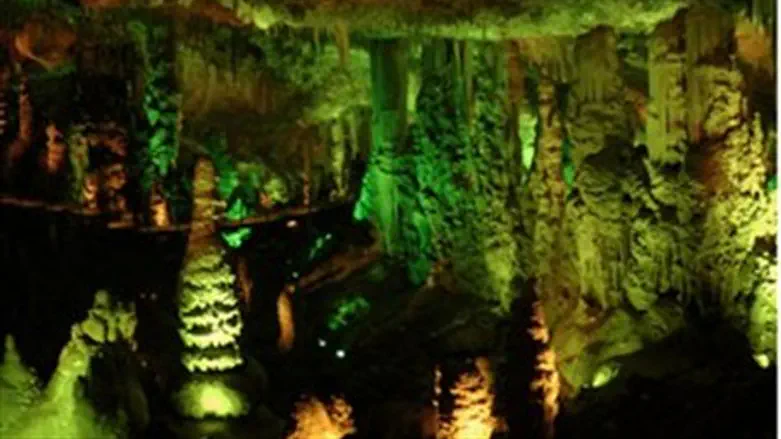
The Stalactite Cave, also called the Sorek Cave, has reopened to the public after undergoing special renovations in terms of lighting, electricity and infrastructure.
The cave, located on the western slopes of the Judean mountains near Beit Shemesh, is 82 meters long and 60 meters wide. It was discovered accidentally by workers blasting at the nearby quarry and contains a wondrously varied world of stalactites and stalagmites. Some formations are at least 300,000 years old.
A visit to the cave is especially magical in winter, when drops of water splash noisily to the floor, where they glisten beautifully.
Dr. Noam Leader, head of the Ecology Department at the Science Division of the Nature and Parks Authority, told Arutz Sheva that the as part of the renovations, the whole lighting system in the cave was revolutionized so that the cave became more appealing to tourists while still functioning ecologically.
“We had major limitations on the wavelengths of the light that we can use so that the stalagmites are not contaminated by algae,” he explained. “This is the first time in the world where new LED lighting technology was applied but with ecological thinking on how to do it correctly, so that the cave can sustain itself for future visitors.”
Tammy Holtz, who is responsible for the development of the cave, added that “as part of the work to upgrade the cave and improve the experience of visiting it, we replaced the railings along the path and worked to improve access for the handicapped. We installed hand railings, emphasized built elements such as benches and railings and adjusted the lighting.”
Shaul Goldstein, who heads the Nature and Parks Authority, told Arutz Sheva, “The Nature and Parks Authority is doing its utmost to maintain our natural resources so that our children can enjoy them for many years to come. The project of the development of the Stalactite Cave, which was done in cooperation with the National Insurance Institute and the Israel Government Tourist Corporation, will allow visitors, including the disabled, to be impressed by the beauty of the cave while ecologically maintaining it. I invite the public to enjoy the new experience of visiting one of the wonders of our country.”
The latest renovations cost about two million shekels and are the most significant renovations done at the cave since its opening to the public in the 1980s. The work was done under a very tight schedule so that it gets done as quickly as possible.